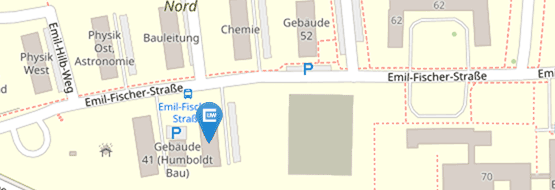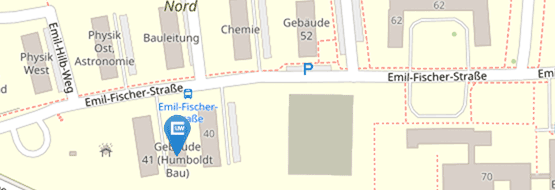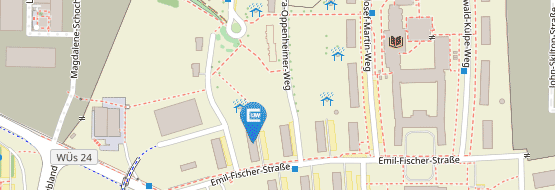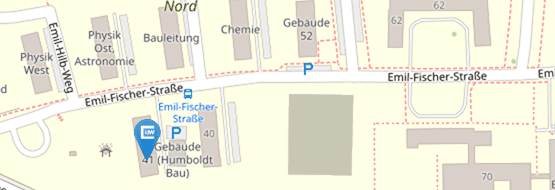Publikationen
-
L. Lauerbach, A. Schlömerkemper: Derivation of a variational model for brittle fracture from a random heterogeneous particle chain, arXiv:2104.08607
-
Š. Nečasová, M. Ramaswamy, A. Roy, A. Schlömerkemper: Motion of a rigid body in a compressible Fluid with Navier-slip boundary condition, arXiv:2103.08762
-
M. Kalousek, Š. Nečasová, A. Schlömerkemper: Extensibility of a system of transport equations in the case of an impermeable boundary, arXiv:1812.03236.
-
L. Lauerbach, S. Neukamm, M. Schäffner, A. Schlömerkemper: Mechanical behaviour of heterogeneous nanochains in the Γ-limit of stochastic particle systems, arxiv.org/abs/1909.06607
- F. De Anna, C. Liu, A. Schlömerkemper, Jan-Eric Sulzbach: Temperature dependent extensions of the Cahn–Hilliard equation, Nonlinear Analysis: Real World Applications, Volume 77, 2024, 104056, ISSN 1468-1218, doi.org/10.1016/j.nonrwa.2023.104056.
-
M. Kalousek, S. Mitra, A. Schhlömerkemer: Existence of weak solutions to a diffuse interface model involving magnetic fluids with unmatched densities, Nonlinear Differ. Equ. Appl. 30, 52 (2023). doi.org/10.1007/s00030-023-00852-0
-
M. Carioni, J. Fischer, A. Schlömerkemper: External forces in the continuum limit of discrete systems with non-convex interaction potentials: Compactness for a Γ-development, Journal of Convex Analysis 30 (2023), No. 1, 217--247, Copyright Heldermann Verlag 2023
-
L. Bachmann, F. De Anna, A. Schlömerkemper, and Y. Şengül Tezel: Existence of solutions for stress-rate type strain-limiting viscoelasticity in Gevrey spaces. Philos. Trans. A Math. Phys. Eng. Sci., 381(2263):20220374, 2023. DOI: 10.1098/rsta.2022.0374
-
L. Bachmann, A. Schlömerkemper and Y. Şengül Tezel: A variational approach to strain-limiting viscoelasticity in one space dimension. Pure and Applied Functional Analysis, 2023
-
H. Garcke, P. Knopf, S. Mitra, Anja Schlömerkemper: Strong well-posedness, stability and optimal control theory for a mathematical model for magneto-viscoelastic fluids. Calc. Var. 61, 179 (2022). https://doi.org/10.1007/s00526-022-02271-y
-
M. I. Español, M. Lewicka, L. Scardia, A. Schlömerkemper: Book: Research in Mathematics of Materials Science, Editors: Springer Cham, ISSN 2364-5733, doi.org/10.1007/978-3-031-04496-0
-
F. De Anna, J. Kortum, A. Schlömerkemper, Struwe-like solutions for an evolutionary model of magnetoviscoelastic fluids, Journal of Differential Equations, Volume 309, 2022, Pages 455-507, ISSN 0022-0396, https://doi.org/10.1016/j.jde.2021.11.034.
-
A. Schlömerkemper, S. Mitra: Magnetoviscoelastic models in the context of magnetic particle imaging, International Journal on Magnetic Particle Imaging IJMPI Vol. 8 No. 1 Suppl 1 (2022): Int J Mag Part Imag https://doi.org/10.18416/IJMPI.2022.2203049
-
M. Kalousek, S.Mitra and A. Schlömerkemper: Global existence of weak solutions to a diffuse interface model for magnetic fluids, Nonlinear Analysis: Real World Applications, Volume 59, June 2021, 103243
-
Š. Nec̆asová , M. Ramaswamy , A. Roy and A. Schlömerkemper: Self-propelled motion of a rigid body inseid a density dependent incompressible fluid, Math. Model. Nat. Phenom. 16, article 9, pages 26 (2021) doi: 10.1051/mmnp/2020052
-
M. Kalousek, J. Kortum and A. Schlömerkemper: Mathematical analysis of weak and strong solutions to an evolutionary model for magnetoviscoelasticity, Discrete & Continuous Dynamical Systems - S, 14 (1), pages17-39 (2021)doi: 10.3934/dcdss.20203
-
M. Kružík, P. Pelech, A. Schlömerkemper: Gradient Polyconvexity in Evolutionary Models of Shape-Memory Alloys, Journal of Optimization Theory and Applications 184, pages 5-20(2020
- O. Boussaid, C. Kreisbeck, A. Schlömerkemper: Characerizations of Symmtric Polyconvexity, Archive for Rational Mechanics and Analysis 234, 417-451(2019).
- B. Benešová, M. Kružík, A. Schlömerkemper: A note on locking materials and gradient polyconvexity, Mathematical Models and Methods in Applied Sciences volume 28, pages 2367–2401(2018)
- A. Schlömerkemper, J. Žabenský: Uniqueness of solutions for a mathematical model for magnetoviscoelastic flows, Nonlinearity 31, pages 2989–3012(2018)
- L. Lauerbach, M. Schäffner, A. Schlömerkemper: On continuum limits of heterogeneous discrete systems modelling cracks in composite materials, GAMM-Mitteilungen volume 40, pages 184-206(2018)
- B. Benešová, J. Forster, C. Liu, A. Schlömerkemper: Existence of Weak Solutions to an Evolutionary Model for Magnetoelasticity, SIAM Journal on Mathematical Analysis volume 50, pages 1299-1236(2018)
- M. Schäffner, A. Schlömerkemper, On Lennard-Jones systems with finite range interactions and their asymptotic analysis, Networks and Heterogeneous Media 18, 95-118 (2018), arXiv:1501.06423
- S. Neukamm, M. Schäffner, A. Schlömerkemper: Stochastic Homogenization of Nonconvex Discrete Energies with Degenerate Growth, SIAM Journal on Mathematical Analysis volume 49, pages 1761-1809(2017)
- C. García-Cervera, M. Kružík, C. Liu, A. Schlömerkemper: Mini-Workshop: Mathematics of Magnetoelastic Materials, Oberwolfach Reports volume 13, pages 2909-2940(2017)
- L. Lauerbach, M. Schäffner and A. Schlömerkemper, On continuum limits of heterogeneous discrete systems modelling cracks in composite materials, GAMM-Mitt. 40,178-200(2017)
- G. Lazzaroni, M. Palombaro and A. Schlömerkemper, Rigidity of three-dimensional lattices and dimension reduction in heterogeneous nanowires, Discrete Contin. Dyn. Syst. S 10, 119-139 (2017), arXiv:1501.07505
- R. Fechte-Heinen, A. Schlömerkemper, About lamination upper and convexification lower bounds on the free energy of monoclinic shape memory alloys in the context of T3-configurations and R-phase formation, Cont. Mech. Thermodyn. 28, 1601-1621 (2016)
- C. Reina, A. Schlömerkemper, S. Conti, Derivation of F=FeFp as the continuum limit of crystalline slip, J. Mech. Phys. Solids 89 231-254 (2016), arXiv:1504.06775
- A. Schlömerkemper, I.V. Chenchiah, R. Fechte-Heinen, D. Wachsmuth, Upper and lower bounds on the set of recoverable strains and on effective energies in cubic-to-monoclinic martensitic phase transformations, MATEC Web of Conferences 33, 02011 (2015) [Published version]
- G. Lazzaroni, M. Palombaro and A. Schlömerkemper, A discrete to continuum analysis of dislocations in nanowire heterostructures, Comm. Math. Sci. 13, 1105-1133 (2015), arXiv:1308.3505 [Postprint version]
- M. Schäffner and A. Schlömerkemper, On a Gamma-convergence analysis of a quasicontinuum method, Multiscale Model. Simul. 13, 132–172 (2015), arXiv:1405.6122 [Published version]
- T. Blesgen and A. Schlömerkemper, On the Allen-Cahn/Cahn-Hilliard-System with geometrically linear elastic energy, Proc. Roy. Soc. Edin. 144, 241-266 (2014), arXiv:1202.5197 [Postprint version]
- I.V. Chenchiah and A. Schlömerkemper, Non-Laminate Microstructures in Monoclinic-I Martensite, Arch. Rational Mech. Anal. 207, 39-74 (2013), arXiv:1201.6679 [Postprint version] [OPUS Würzburg]
- L. Scardia, A. Schlömerkemper and C. Zanini, Towards uniformly Gamma-equivalent theories for nonconvex discrete systems, Discrete Contin. Dyn. Syst. B, 17, 661-686 (2012) [Preprint version. Published by AMS. All rights reserved.]
- L. Scardia, A. Schlömerkemper and C. Zanini, Boundary layer energies for nonconvex discrete systems, Math. Models Methods Appl. Sci., 21, 777-817 (2011) [Postprint version. Electronic version © DOI]
- K. Bhattacharya and A. Schlömerkemper, Stress-induced phase transformations in shape-memory polycrystals, Arch. Rational Mech. Anal. 196, 715-751 (2010)
- A. Schlömerkemper and B. Schmidt , Discrete-to-continuum limit of magnetic forces: dependence on the distance between bodies, Arch. Rational Mech. Anal. 192, 589-611 (2009)
- A. Schlömerkemper, About solutions of Poisson's equation with transition condition in non-smooth domains, Z. Anal. Anwend. 27, 253-281 (2008) [MPI-MIS preprint 53/2006]
- N. Popovic, D. Praetorius and A. Schlömerkemper, Analysis and numerical simulation of magnetic forces between rigid polygonal bodies. Part II: Numerical Simulation, Contin. Mech. Thermodyn. 19, 81-109 (2007) [Postprint version]
- N. Popovic, D. Praetorius and A. Schlömerkemper, Analysis and numerical simulation of magnetic forces between rigid polygonal bodies. Part I: Analysis, Contin. Mech. Thermodyn. 19, 67-80 (2007) [Postprint version]
- A. Schlömerkemper, Lattice approximation of a surface integral and convergence of a singular lattice sum, Asymptot. Anal. 52, 95-115 (2007) [MPI-MIS preprint 86/2005]
- C. Lexcellent and A. Schlömerkemper, Comparison of several models for the determination of the phase transformation yield surface in shape-memory alloys with experimental data, Acta Mat. 55, 2995-3006 (2007) [Postprint version © 2007. This manuscript version is made available under the CC-BY-NC-ND 4.0 license.]
- A. Schlömerkemper, Mathematical derivation of the continuum limit of the magnetic force between two parts of a rigid crystalline material, Arch. Rational Mech. Anal. 176, 227-269 (2005) [Postprint version]
- K. Bhattacharya and A. Schlömerkemper, Transformation Yield Surface of Shape-Memory Alloys, J. Phys. IV France 115, 155-162 (2004) [Published version]
- S. Müller and A. Schlömerkemper, Discrete-to-continuum limit of magnetic forces, C. R. Acad. Sci. Paris, Ser. I 335, 393-398 (2002) [Postprint version © 2002. This manuscript version is made available under the CC-BY-NC-ND 4.0 license.]
- M. Requardt and A. Schlömerkemper, Perturbation theory of Schrödinger operators in infinitely many coupling parameters, J. Phys. A: Math. Gen. 32 (1999), 7523-7541 [arXiv math-ph/9901021]





